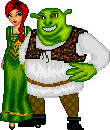In the past, women have been represented as inadequately when compared with the portrayal of men. This is evident as women were once symbolic annihilated (Tuchman, 1975) meaning that women were invisible in the media. However, due to the increase in feminism; women have been able to challenge patriarchy and as a result have much more status now in society and the media then before. This is apparent in many different types of media; but then again it can be argued that although there has been an improvement it would not be fair to say women are represented equally to men.
Women are still being represented in stereotypical roles for example in the British soap Hollyoaks, Carmel is represented as the blonde bimbo. This is made clear to the audience as she is represented as attractive and popular but lacks common sense and academic intelligence. Possible reasons why she is represented in this way is because it makes it easier for the producers of the show to use as a short hand for the audience as it helps audience identify with the stereotype characters and can also give the producers the opportunities to challenge these stereotypes.
On the other hand, Monica subverts stereotypes of a typical woman as she is assertive and dominant over chandler. However, she conforms to the typical “housewife” role by her excessively cleaning; but then again this exaggeration of her cleaning obsession can be constructed to create humour for the audience. This demonstrates how sitcoms have progressed since the 1970s as Miles research states how sitcoms of the era showed equal number of men and women in them but the women representations were sexist.
Moreover, women in films are still placed in generic roles. These generic roles include the final girl in slasher films, the damsel in distress in action films and the femme fatale in film noir. A key example is Jane Greer in “Out Of the Past” (1947). The final girl in slasher films is represented with male qualities this typically includes short hair, masculine costume and not having a masculine name. An example is Laurie in “Halloween” (1978, John Carpenter). Moreover, an example of a damsel in distress in action films is the bond girl that is rescued by Bond. However, there has been a progression of this role throughout the years due to feminism as the Bond girls have develop by becoming strong characters with the resourcefulness and skills.
Saturday, June 16, 2007
Subscribe to:
Post Comments (Atom)



No comments:
Post a Comment